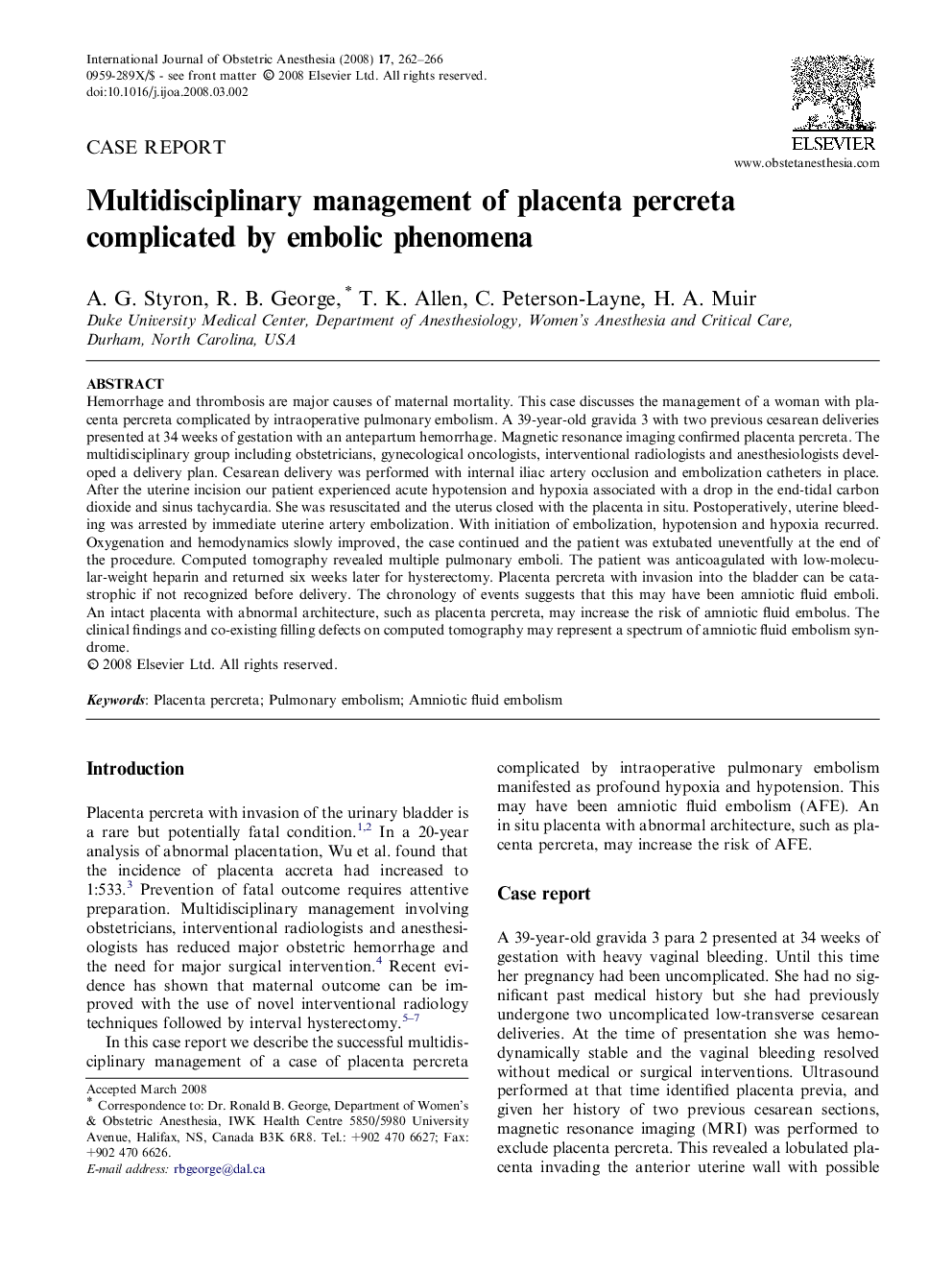| Article ID | Journal | Published Year | Pages | File Type |
|---|---|---|---|---|
| 2758469 | International Journal of Obstetric Anesthesia | 2008 | 5 Pages |
Hemorrhage and thrombosis are major causes of maternal mortality. This case discusses the management of a woman with placenta percreta complicated by intraoperative pulmonary embolism. A 39-year-old gravida 3 with two previous cesarean deliveries presented at 34 weeks of gestation with an antepartum hemorrhage. Magnetic resonance imaging confirmed placenta percreta. The multidisciplinary group including obstetricians, gynecological oncologists, interventional radiologists and anesthesiologists developed a delivery plan. Cesarean delivery was performed with internal iliac artery occlusion and embolization catheters in place. After the uterine incision our patient experienced acute hypotension and hypoxia associated with a drop in the end-tidal carbon dioxide and sinus tachycardia. She was resuscitated and the uterus closed with the placenta in situ. Postoperatively, uterine bleeding was arrested by immediate uterine artery embolization. With initiation of embolization, hypotension and hypoxia recurred. Oxygenation and hemodynamics slowly improved, the case continued and the patient was extubated uneventfully at the end of the procedure. Computed tomography revealed multiple pulmonary emboli. The patient was anticoagulated with low-molecular-weight heparin and returned six weeks later for hysterectomy. Placenta percreta with invasion into the bladder can be catastrophic if not recognized before delivery. The chronology of events suggests that this may have been amniotic fluid emboli. An intact placenta with abnormal architecture, such as placenta percreta, may increase the risk of amniotic fluid embolus. The clinical findings and co-existing filling defects on computed tomography may represent a spectrum of amniotic fluid embolism syndrome.
